With bold storytelling and unconventional characters, DreamWorks has made a name for itself as Disney’s edgier younger stepbrother. But some fans have taken inspiration from the studio’s alternate approach to kids’ movies by injecting them with some truly bizarre and disturbing fan theories. From the twisted real reason Shrek is the last ogre, to how the trolls guaranteed their own extinction, as well as Bee Movie’s mutant problem, and Kung Fu Panda’s humanoid history, let's explore some of the most intriguing and unsettling DreamWorks movie theories.
Fiona Cannibal Theory
The Shrek franchise is known for its clever spins on traditional fairytales, but a fan theory suggests a darker twist on one particular trope. Similar to Sleeping Beauty and Rapunzel, Fiona's been locked up in a tower since she was a little girl. But have you ever wondered where she got her food?
There’s no sign that anyone else has safe access to the castle besides Fiona and the Dragon. The place is locked down tight, so it’s not like anyone's delivering pizzas up there. That suggests the Dragon isn’t just guarding Fiona, it's also feeding her. But the dark truth of what’s on the menu is more shocking than you can imagine.
When Shrek and Donkey first approach the Dragon’s Keep, they pass the partial remains of knights who presumably tried to rescue Fiona. You might assume they ended up in Dragon’s belly, but some speculate those wannabe princes actually ended up on their would-be princess’ dinner plate. It sounds crazy, but there’s some pretty convincing evidence to chew on.While escaping the tower, Shrek and Fiona wander past a giant cauldron as well as a large open cookbook titled "Knightly Treats." Since dragons don’t usually cook their food in pots, or at all, some theorists propose that culinary setup is for the preparation of Fiona’s meals. If you take a closer look in the image below, you’ll see the first thing on the ingredients list is none other than one deboned knight.
Also, the dragon surely wouldn't care if her meals are de-boned. The conclusion is: the damsel Princess Fiona may quite literally be a man-eater! As a secret ogre, it’s possible Fiona may have an appetite for man flesh, especially at night when her curse transforms her. Upon waking in the morning as her human self, you can only imagine her horror when she remembers what and who she’s still digesting from the night before. But, there’s another twist to that grisly theory.While it’s clear the human population of the Shrek-verse believe ogres eat people, we don’t see any concrete evidence of that whatsoever. While Shrek does own a jar full of eyeballs, it’s not confirmed that those are human eyes, so depending on what the truth is, Shrek could be horrified to learn about his Princess’ former diet. Maybe it would have been better if Shrek hadn’t rescued Fiona after all.
How To Train Your Dragon VS Game Of Thrones
While the How to Train Your Dragon movies are fun, animated adventures for all the family, some fans have unearthed evidence suggesting they might be the prelude to a much darker saga. There’s a theory that How to Train Your Dragon exists in the same universe as Game of Thrones, and that Hiccup is the forefather of the dragon-riding Targaryen line.
You might be thinking that
Targaryens are known for their silvery fair hair while Hiccup’s hair is dark brown, but that may not matter. As seen in the Game of Thrones universe, having one dark-haired parent doesn’t automatically mean dark-haired children.
Hiccup’s eventual wife Astrid’s fair hair could’ve easily become a defining genetic trait of her descendants with Hiccup, much like the silver hair of the Targaryens and indeed one of their eventual children has light-colored hair. It’s not hard to imagine that, generations down the line, Hiccup and Astrid’s descendants emerged as a noble family due to their unmatched skill with dragons.Some even suggest that Hiccup’s home, the Isle of Berk, might be located west of Westeros, which if you’ve watched Game of Thrones you’ll know is famously unexplored. It’s theorized that a cataclysmic event, akin to the Doom of Valyria, devastated Berk. But the Hiccup-Targaryens survived, possibly escaping on dragons to Essos. If that is true, it not only means that Hiccup and Astrid began the lineage that resulted in House Targaryen, but it would also make them distant relatives of Daenerys Targaryen and Jon Snow.Another link is the resemblance between Hiccup’s emblem in How to Train Your Dragon 2 and House Targaryen’s sigil definitely similar! HBO’s House of the Dragon director Greg Yaitanes even confirmed he took inspiration from the How to Train Your Dragon movies, so maybe he knows something we don’t.While the theory is far-fetched and likely contradicts canon Game of Thrones lore, it highlights fun connections between the two worlds. Although, considering the Targaryens’ habit of sibling marriage, the relationship between How to Train Your Dragon’s fair-haired twins Ruffnut and Tuffnut may be best left unexplored.
Kung Fu Panda Theory
If you’ve seen Kung Fu Panda, you’ve probably noticed that the animals in the movies display many human-like traits. They wear clothes, enjoy human food, and even sport beards. Their society, too, mirrors our own with restaurants and familiar architecture. But some fans have interpreted those uncanny similarities as hints to an intriguing theory that the world has some hidden human ancestry.
The theory suggests that, thousands of years before the events of Kung Fu Panda, the ancient kung fu masters of the in-universe China were in fact originally humans who discovered a powerful kung fu technique that allowed them to shapeshift into animals. That transformation granted them the physical and behavioral traits of animals, thus enhancing their martial arts prowess.
Chameleon Vs Tai Lung Fight Scene | KUNG FU PANDA 4 (2024) Movie CLIP HD by JoBlo Animated Videos Proponents of the theory point to the TV series Kung Fu Panda: Legends of Awesomeness, particularly the episode, Ghost of Oogway. In the episode, characters use a kung fu move that lets them take on the appearance and abilities of other animals, just as the theory states. It’s thought that, in their quest for kung fu perfection, the ancient human masters decided to remain in their animal forms and mate to produce highly skilled infants.Because those infants were born as animals, they had no human form to transform back into. So, slowly, the animal population grew. As we know, in the world of Kung Fu Panda only a select few possess talents for kung fu while the vast majority are largely talentless. So, perhaps the original plan of the kung fu masters to populate China with kung fu experts failed, and eventually resulted in the complete extinction of humans in the region.It has been reported the producers of Kung Fu Panda 4 did consider including human characters in the story. But seeing as they didn’t actually do it, it’s far from canon that humans exist in the KFP universe. Either way, the idea of a humanoid Po is pretty intriguing. But then again, we do already have IRL Jack Black, who is mostly human, to help us imagine.
The Penguins Of Madagascar Theory
In Madagascar, penguins Skipper, Kowalski, Private, and Rico exhibit extraordinary intelligence far beyond that of ordinary penguins. While their skills seem to have spawned from natural talent, some believe they have disturbing origins.
The theory goes that those penguins weren't always the ingenious masterminds we know. Instead, they were once ordinary penguins in Antarctica. That was until they were captured by a covert scientific research facility and subjected to secret government experiments. The facility aimed to enhance animal intelligence for military use, teaching the penguins to understand human technology, operate machinery, build devices, and comprehend human language.

After achieving such high intelligence, the penguins escaped the facility, intending to return to the wild. However, their newly advanced behavior isolated them from their former colony, leading to their capture and transfer to a zoo. There, they continued to observe and learn from humans while planning their return to Antarctica.Evidence for that theory is shaky, besides the penguins’ military obsession and the fact that they are so unnaturally intelligent. But another potential clue to their origins appears when Private attempts to break the ship’s control code in the first movie. If you look closely at the screen, you may notice a hidden message amid the jumbled code attempts.
DreamWorks Madagascar | The Penguins Takes Over The Ship | Madagascar Movie Clip by DreamWorks Madagascar The message reads: “what a piece of work is penguin”, and, if you’re up on your Shakespeare, that might sound a little familiar. That is a reference to the tragic play of Hamlet who, while pondering the complexities of human nature exclaims: “what a piece of work is a man.”While some believe the message in Madagascar is there to highlight Private’s feelings of hopelessness while trying to break the code, it might be a subtle hint towards the penguins’ complicated feelings about what they’ve become. So, are those penguins simply happy to smile and wave? Or is it just a front to mask their tragic past?
Shrek's Donkey Is Actually Lampwick From Pinocchio
The fairytale origins of many characters in Shrek, like the Gingerbread Man and Three Little Pigs, are obvious. But the mystery of Donkey’s origin has caused quite a stir among Brogres, Brogres being the name given to Shrek fans. Though Donkey doesn’t appear to come from any specific fairytale, some fans suggest he shares a creepy connection with none other than Pinocchio.
In Disney’s adaptation of the original fairytale, Pinocchio ends up on Pleasure Island, where rebellious boys can run riot without adult supervision. It's eventually revealed the boys are being turned into donkeys and sold. While Pinocchio escapes that fate, his friend Lampwick is transformed in what’s recognized as one of the most horrifying scenes in cartoon history.
Pinocchio (1940) - Pleasure Island/Donkey Transformation by Joshua Allen Known in Carlo Collodi’s 1883 original fairytale as Candlewick, it’s thought that character and Donkey are the same person. Since Pinocchio frequently appears in the Shrek movies, it makes sense that some transformed children from the tale may also be around. What’s more, further clues are dropped in Shrek the Third.Donkey alludes to being bullied and receiving schoolboy wedgies when he was young, which only makes sense if he was a pant-wearing human at some point. When he and Puss in Boots exchange bodies, Puss struggles to control his hee-hawing and speech, which Donkey reassures him he'll learn to control, hinting that Donkey went through the same process.
Shrek the Third: Donkey and Puss switch bodies by Brad V
The only real flaw in that theory is that the filmmakers behind the first Shrek imply in the DVD commentary that Donkey was originally intended to be a regular donkey who was cursed. However, since the movie never reveals Donkey’s true origins, it isn’t actually canon. But perhaps Shrek 5 or even a Donkey spin-off movie will confirm whether the human-donkey theory rings true.
It’s not only Donkey’s origins that might need an explanation. While the Shrek movies are filled to the brim with subtle background details and easter eggs, there’s one background character I’ll bet you’ve never noticed. When Shrek and Donkey enter Duloc if you look closely you’ll see a shadowy figure inside one of the ticket booths.That is in fact Zee from DreamWorks’ first movie, Antz. But, the size of that guy indicates that the ant characters in Antz were actually human-sized. Or is the Shrek universe made up of ant-sized creatures? So many questions.
Bergens Were The Troll's Only Predator
In Trolls, we follow Poppy and Branch as they attempt to save their Troll village from being eaten by the evil Bergens who traditionally chow down on the creatures during a festival known as Trollstice. In the end, our heroes prevail and the Bergens agree to stop eating the trolls. And they all lived happily ever after, or did they? Some fans have theorized that, after the events of the movie where Bergens no longer consume Trolls, a disturbing consequence emerges.
In the initial aftermath of the deal with the Bergens, the Trolls rejoice and begin living freely without fear of being eaten. But the theory suggests that happiness would be short-lived. Because, with their only natural predator gone, the Trolls' population is likely to explode in numbers. As the Trolls multiply, they’d rapidly deplete their resources and habitat.
If the theory is correct, being eaten by the Bergens was actually ensuring the continued survival of the Troll species as it kept the population at a manageable level. Without the Bergens, the Trolls could eventually face mass starvation and economic devastation due to a lack of resources. But what do you think? Could Trolls’ happy ending actually spell the end of the species? This dark theory may be possible.
Puss In Boots: The Wolf Character Is The Embodiment Of Death
In 2022’s Puss In Boots The Last Wish, we follow Puss as he embarks on an epic adventure to restore eight out of his nine lives, while being pursued by a terrifying Wolf. When we first meet the Wolf, Puss is sitting alone at a bar drinking glass after glass of milk, and if you look closely you’ll see he’s on his ninth glass, mirroring his ninth life.
Puss Meets the Big, Bad Wolf 😱 | PUSS IN BOOTS: THE LAST WISH by Universal Kids When Wolf appears next to Puss he’s even shown holding one of the glasses, possibly symbolizing that he’s holding Puss’ life in his hands. It’s later revealed that Wolf is actually a manifestation of Death on the hunt for Puss to claim his final life. But have you ever wondered why exactly Death is represented by a wolf specifically? Well, some fans think they have the answer.Many fans theorize that Death can change his appearance based on his prey's fears. As humans, we’d typically picture Death as a cloaked Grim Reaper, symbolizing our fear of the unknown. But for Puss in Boots, a cat, Death appears as Wolf, a canine.
On top of that, Puss in Boots is set in the same universe as Shrek, where the population consists of fairytale characters and creatures. And who is one of the most frequent villains in fairytales and fables? The Big Bad Wolf. He appears in The Three Little Pigs, Little Red Riding Hood, and The Boy Who Cried Wolf, making him the embodiment of ultimate fear in a fairytale world.
DreamWorks really upped the ante... by Psyhicx Shrek Inspired By Wrestler Maurice Tillet
While the plot of Shrek is rooted in fairytales, did you know the DreamWorks character may have been inspired by a real-life person? Shrek is said to bear an uncanny resemblance to a man called Maurice Tillet. Also known as The French Angel, Maurice was a Russian-French pro wrestler and world heavyweight champion in the 1930s and 40s.

Aside from his wrestling career, Maurice gained fame for his unusual appearance caused by a condition called acromegaly which triggered his hands, feet, and facial features to swell to enormous proportions, due to an excess of growth hormones. Much like Shrek, Maurice was often judged due to his appearance, while some say he even had an extremely beautiful wife akin to Shrek’s initial relationship with Princess Fiona.That being said, DreamWorks has never confirmed nor denied that any living person inspired the creation of Shrek. Not only that but while this picture below does somewhat resemble Shrek alongside Fiona in her human form, the woman in the photo below is not Maurice’s wife but model Dorian Leigh.
It’s also a little known fact that the DreamWorks’ classic character is loosely based on the 1990 children’s book also called Shrek by American cartoonist William Steig. Steig passed away in 2003, and never spoke publicly about any connection between his grumpy green ogre and the French Angel. But what do you think of the claimed resemblance? Coincidence or secret inspiration?
Megamind's Mother Looks Like Roxanne Ritchi
From the beginning of Megamind, it’s clear the title character is completely smitten with reporter Roxanne Ritchi and, happily, his attraction is eventually returned. But considering Megamind and Roxanne are completely different species born on entirely different planets, some fans have questioned what ultimately caused the two to find one another alluring. One theory uncovers a very uncomfortable truth to answer that question.
You may have heard the dating cliché that opposites attract.
But some psychologists suggest people have a tendency to be attracted to individuals who remind them of someone familiar. With that in mind, some rather twister fans have noted that Roxanne has strikingly similar facial features and general appearance to Megamind’s mother.It that suggesting that Megamind has the hots for his mom? Thankfully, it’s not that simple. Generally, folks aren’t attracted to their parents in that way, but we are attracted to the feeling of safety brought on by familiar faces. Some studies have found our chosen romantic partners may resemble one of our parents, either physically or behaviorally because stimuli we’re exposed to more frequently are easier for our brains to process.
It’s the same reason many people develop a “type” there’s comfort in general familiarity. In context, despite being only days old when leaving his home planet, Megamind vividly recalls his parents' faces. Since no other female figure filled the gap left by his mother, Megamind may subconsciously be attracted to women who share her physical traits. Including that big forehead.
The Boss Baby Theory
In The Boss Baby, seven year old Tim Templeton's life is turned upside down when he discovers his new baby brother is actually living a double life as a secret CEO. Definitely an odd premise. In the opening scenes, Tim's parents, including his heavily pregnant mom, tuck him into bed and ask if he’d like a baby brother, to which he says no. The next day, the suited and booted Boss Baby arrives, and chaos ensues. However, many fans believe Tim's adventure with the Boss Baby might not have happened at all, and the signs were there from the start.
After his parents ask Tim if he’d like a baby brother, they set a marble machine into motion, and Tim falls asleep wondering where babies come from. Next, we see a gigantic baby-making machine in the sky, with babies on conveyor belts, mimicking Tim’s marble run.
The Boss Baby - Where Babies Come From | Fandango Family by Smart Movie According to the theory, Tim’s bedroom is full of other clues suggesting he imagined the entire movie. For instance, his toy dog and barn may have inspired PuppyCo, and his mousetrap set provides the basis for a trap seen later. There’s also a pirate ship, cop car and rocket ship, all of which show up in the movie.Some fans also believe there are background cues that signal Tim’s slow acceptance of his new brother. For instance, there's an airport metal detector turns from red to green during a moment of brotherly connection, mirroring Tim’s changing perceptions of the Boss baby; from management boss to family member.
Baby Boss 2017 making up after an argument by Someone Somewhere It all sounds very Wizard of Oz, but it’s clear Tim has a vivid imagination, making it plausible he invented the Boss Baby story to cope with sibling jealousy. In reality, he was probably sat alone in his room playing with his toys while his parents were busy with his new brother. While "it was all a dream" twists are usually clichéd, that theory definitely enhances the story, and, though never explicitly confirmed, the clues suggest it's more fan fact than fiction.
Shrek Is A Cannibal
Throughout the first three Shrek films, Shrek appears to be one of very few, if not the only, natural-born ogres. But why is that? The seemingly obvious explanation is that angry mobs of ogre-hunters hunted the species into extinction. However, that explanation falls apart when considering the events of Shrek Forever After.
In the fourth instalment, our hero is tricked by Rumpelstiltskin into undoing his own birth. Shrek then finds himself in an alternate reality where he never existed, and yet a considerable number of other natural-born ogres have banded together to fight a common enemy. Some fans believe that because Shrek’s non-existence resulted in a thriving ogre community, his presence in the original timeline played a significant role in their disappearance.In Shrek the Third, it’s revealed that Shrek’s father once tried to eat him, so it’s not too far-fetched to wonder if Shrek’s strange upbringing led him to develop a taste or at least a bloodlust for his fellow ogres. While Shrek Forever After doesn’t hint that ogres eating other ogres is the norm, Shrek’s family could’ve in theory been a particularly bad batch with urges to eradicate their competition.
YouTube Video by Unknown
That would certainly put a spin on the explanation for all those pickled eyeballs we see Shrek hoarding. Could they be the last remnants from his ogre meat diet, saved as a special occasional treat? It doesn’t bear thinking about! While there’s no real evidence those eyeballs previously belonged to ogres over any other creature, there’s another, more likely explanation for the lack of ogres seen in the original timeline.It’s established in the first Shrek movie that ogres are solitary creatures who enjoy living in isolation. That implies that in the alternate timeline of Shrek Forever After, the only reason they’re able to be united by alternative Fiona is to fight against Rumpelstiltskin. So it’s fairly likely they do exist in the original movies, we just don’t see them thanks to their solitary swamp-dwelling. Or at least, that’s what evil, ogre-eating Shrek wants you to think.
Barry B Benson's Blue Eyes Theory
In Bee Movie, we meet Barry B Benson, a young honeybee disillusioned by his assigned fate to produce honey. After venturing outside the hive for the first time, he breaks one of the bee world’s cardinal rules by starting a relationship with a human. But beyond the movie’s bizarre premise, some fans have spotted a seemingly innocuous detail that may explain some of the hero’s odd behaviors.
Strangely, Barry, and his father Martin, appear to be two of the only bees in the entire hive with blue eyes as opposed to brown. Seemingly, Barry genetically inherited his blue eyes from his father. But the real question is: in an almost completely brown-eyed hive, where do Martin’s blue eyes come from, and what do they mean?
One theory is that that father-son connection is due to a genetic mutation that makes their brains inherently different from those of other bees. In the movie, Barry's aspirations to interact with humans is seen as very unusual, so some kind of mutation could be causing him to act differently to the rest of the hive.
It’s possible that Martin also struggled with strange thoughts when he was Barry’s age, and that’s why he tries so hard to dissuade Barry’s instincts. Perhaps Martin had an out-of-hive experience similar to Barry’s, and was traumatized by an interaction with humans. That trauma might explain his lack of support for Barry's aspirations, as he could be projecting his own fears and past experiences onto his son.
Bee Movie - Barry wants justice by Filmboy Ultimate Ultimately, Barry’s blue eyes likely serve a practical purpose for the audience: to easily identify the main character. It makes Barry stand out, while Martin's blue eyes simply ensure Barry’s appearance makes genetic sense. But part of me can’t help wondering if Barry’s old man doesn’t have a bit of human-on-the-side somewhere out there, the old hound-dog!
Shark Tale's Fish King
One of DreamWorks' more bizarre releases, Shark Tale features an underwater metropolis inhabited by mob sharks, weirdly suggestive lionfish, as well as starring a fish Will Smith. Among the numerous pop culture references on display in that fishy world, one background billboard stands out. While obviously meant as a clear twist on Burger King, some fans have wondered: in a underwater world inhabited by fish, what does Fish King serve?
In our world, Burger King serves burgers, so logic suggests Fish King serves fish, hinting at a darker side of that aquatic society. While plenty of fish do eat other fish in real life, the implications within Shark Tale's society are unsettling. Preyed-upon fish like Oscar live together in Southside Reef for protection from carnivorous predators like sharks, yet restaurants there are serving various fish dishes, including sushi.
Does that imply weaker species like Oscar’s are on the menu of their local fast-food joints? The logistics of running a Fish King restaurant raise further questions. Are employees expected to cook members of their own species? How are the fish sourced? Are they from fish hospital morgues? Or hunted for meat? Is there a donor system where fish can register to be used as food after death? The questions are never-ending, each more horrifying than the last.Ultimately, the inclusion of Fish King is most likely just some subtle satire on consumer culture or a playful jab at absurd marketing. But after digging a little deeper, it really makes you question how that fishy society really functions, where it's either eat or be eaten. And, with some of the theories floating around for DreamWorks movies, who knows for sure!If you were amazed at these DreamWorks movie theories, you might want to read about other
theories that will ruin your childhood. Thanks for reading!


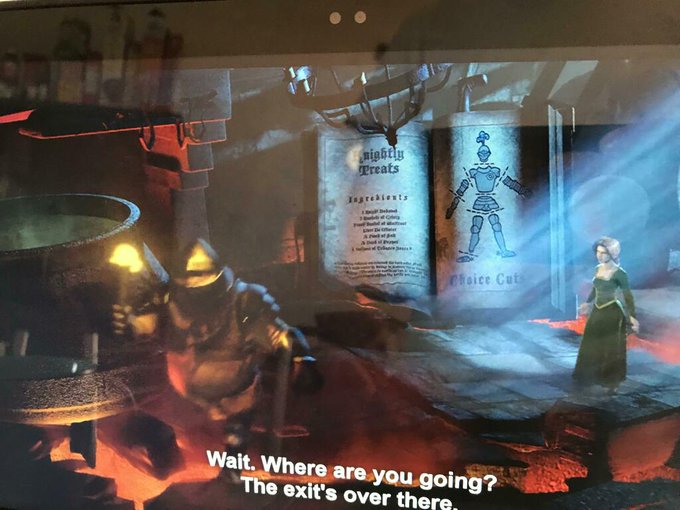
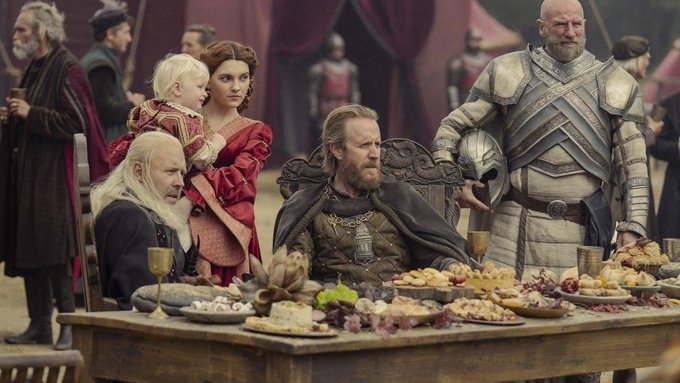
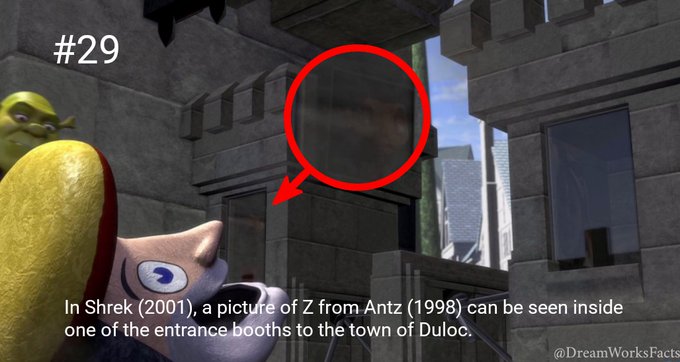
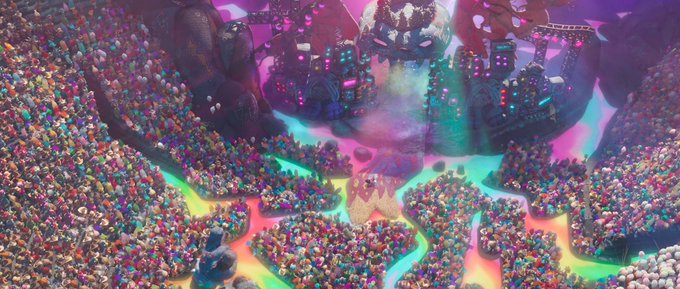

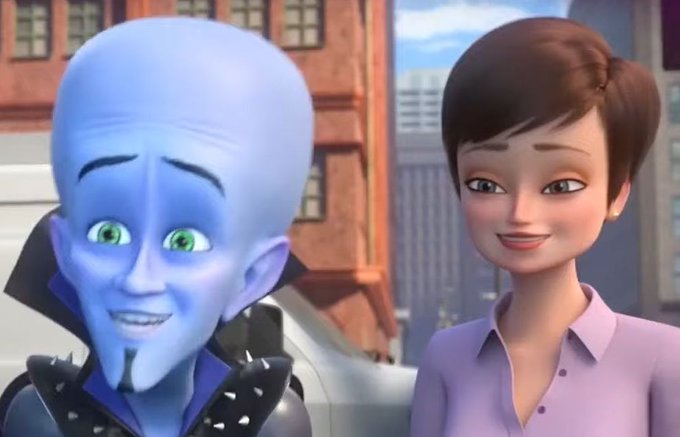




](https://beamazed.b-cdn.net/dfhvoxjgb/image/upload/v1716774122/most-expensive-mistakes-in-history/24QTNQGW5ewzTNuJTUhc3O.jpg?width=400)







